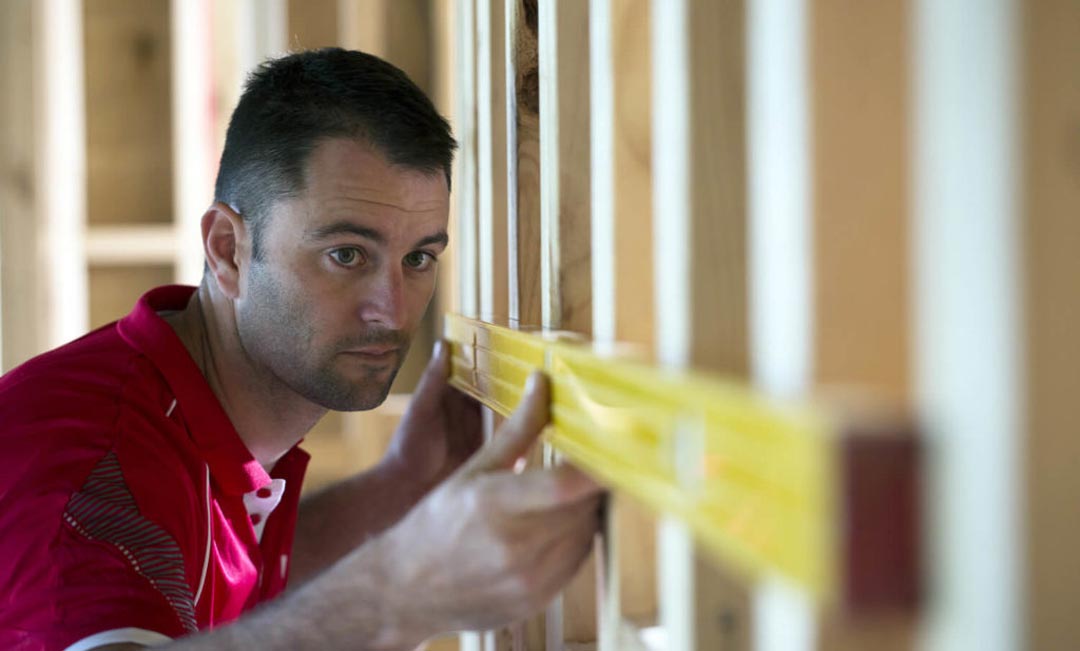The new CCCFA consumer lending regulations were intended to target loan sharks, but instead a whole gamut of mortgage hopefuls have been caught up in a tangle of red tape that few would have predicted.
As of December 1, 2021, amendments to the Credit Contracts and Consumer Finance Act (CCCFA) saw changes to the types of inquiries lenders must make before extending credit to anyone.
The changes took regulations that had been followed in principle in the past and gave them teeth, prescribing the hoops lenders must jump through to assess a borrower’s ability to fund repayments, even if that included critiquing how many lotto tickets and Uber Eats purchases they bought in a month.
Tales of distress caused by the new regime can be found in any media channel, with first-home buyers seeing pre-approved finance suddenly withdrawn, and others who would have qualified prior to December 1 being told to go away for three to six months and take a good hard look at their financial behaviour, if they want any chance of meeting the new requirements.
At the other end of the scale, even the well-heeled with plenty of assets to secure a loan are given similar guidance and told to shop less on wagyu steak and BMWs, if they want to get a mortgage under the new rules.
Brokers say it is the perfect storm for first home buyers in particular, with the CCCFA impacts coming on top of rising interest rates, tighter LVR restrictions, and banks starting to impose debt-to-income restrictions. Also, banks are only lending to those who could easily afford a predicted 6-7% mortgage rate.
It’s clear that some amendments need to be made. Advocates such as managing director of mortgage broking firm Squirrel, John Bolton have launched petitions on both change.org and at Parliament calling for a review of the law. Commerce minister David Clark has asked MBIE to undertake a review (again) and says he will move quickly to make tweaks to the law.
But in the meantime, builders are reporting a slow-down in finance approval for new builds and a knock-on effect as finance delays slow projects, as rampant material cost inflation nibbles away at profits.
Industry Insider spoke to three industry leaders to find out how the CCFA is impacting their projects and the sector as a whole.

Damien Taylor, Director of Safari Group, says that he’s seen a real slowing down of things, just purely through the CCCFA.
“The biggest impact from the CCCFA is the slowdown in finance approvals, which impacts pre-sales, and in turn can delay a project and expose it to inflation in material costs.
“We do rely on those pre-sales from a funding perspective. That’s what makes the development bankable – reaching a certain level of pre-sales is paramount to obtaining the funding for these projects,” Taylor says.
Safari specialises in ambitious multi-dwelling projects, with a 12 story tower in Ellerslie, an apartment development in Parnell, and a hotel and apartment complex in Wellington all under way.
“They’re large developments by New Zealand standards. Ellerslie’s $140 million on completion. Banks want to see a significant amount of pre-sales now to even fund these developments. And there’s not many developers that can get them to work using prime banks to fund, just because of the level of pre-sales needed.
“We’ve got our funding locked away for [Elleslie]. It’s been challenging on the development side with what’s going on in the market in particular. There’s a lot of angst around escalation and price increases and things like that. But, it’s sold really, really, well residentially because of its price point and the rental returns that you get on that.”
“We certainly haven’t seen things stop. And we made four or five sales last week and we’re actually ahead of what we were selling this time last year.
“It’s still early days – there’s always a lag in construction and development, but we’re keeping a close eye on it.“

Andrew Moore, Commercial Manager at CMP Construction, says that the hasn’t been a direct impact from the CCCFA on any if CMP’s projects as yet, but that it will definitely be impacting the residential home builder or those working for mums and dads, he says.
CMP specialises in high rise, multistory, large commercial projects over 20 million dollars, typically work for large development companies or corporates who get corporate funding for their development.
Moore says they are seeing significant changes in lending requirements.
“We are seeing a lot of banks requiring stronger feasibility studies. We are seeing them digging a lot more into the construction contracts – wanting to meeting the builder, wanting to know how clean the construction contract is price-wise, wanting to really understand the risks in the project, wanting to understand the manpower that we have set aside for the project and the experience of that manpower, wanting to know where our price sits with the volatility of escalations, how well we think the drawings work, what is the risk of variations…?
“Typically, a developer will need to make a contingency allowance for variations or unforeseen items, but the banks don’t want to see that allowance any more than five or 10%. So the other 90% of the price has to be lump sum, fixed price guaranteed or committed, to mitigate the bank’s risk,” he says.
Moore says he’s also seeing an increase in the amount of money that the developer needs to put in themselves, whether that’s through mezzanine funding or his own funding or collateral or whatever.
“Those percentages have significantly increased – the main Aussie banks, they may only be lending on, for instance, 60% of the development now, as opposed to 80%, historically, just by way of example.
The caution of the Australian banks has seen the emergence of international banks like ICBC or CCB coming into the country to fill the gap. At the same time, Moore’s seeing second and third tier funders coming into the country, such as PAG out of Hong Kong.
“Their interest rates are a lot higher, but they seem to be able to provide funding on projects where the developers require less money, but there are way stricter terms and penalties,” he says.
So, are we are seeing a lot more finance risk being put on the builder or developers these days? Moore says there is.
“Look, we’ve got enough challenges in the industry at the moment, with councils being so risk adverse that they’re casting on a lot more risk to the developer or the builder. We’re seeing consultants being overloaded with work.
“In my job I’m pricing projects that will start in two years and finish in four years and my job becomes very complex. It’s not so bad if you’re pricing a project today, you start tomorrow and you finish in three months. But jobs that are years out, I’ve got to try and guess what the pricing of construction’s going to be in the future.
“For instance, the second we get a go ahead on a project we’ll book in time slots for kitchens or windows or precast concrete that we won’t need for another year, in order to make sure that in a year’s time we’ve got what we need.”
That means now having to include storage costs for early procured goods, but Moore says it’s still cheaper than the inflation rates that we are currently experiencing.
Another thing Moore is seeing a lot more is the insistence of contractors to put up bonds.
“The rules on bonding have changed and put a lot of pressure on a builder. If we’re going to do a $100 million project, we’ll need to stick up a $5 million dollar bond now. That’s close to seven and a half million dollars’ worth of either asset or cash at the banks fingertips to grab if we were not to perform now.
“A lot of construction companies don’t have that much asset or the directors or shareholders refuse to put up their own assets, so that then prevents the builder taking on too much work because they don’t have the ability to provide the bonding.
“We’ve got over $20 million worth of personal assets, directors, homes, or shareholders, homes, or cash that the banks can take away at a moment’s notice if we don’t perform.
“So that’s the significant risk. I’m responsible to make sure that we do perform because I don’t want to lose my house,” Moore says.
Looking ahead the question is, will things get back to ‘normal’ in the construction sector, with prices under control and finance more easily obtained? Moore says there are signs that will happen, but it’s early days to make those predictions.
“Look, there is talk about shipping getting back to normal, there is talk about commodity prices going down overseas. And therefore, there should be a slow drop in pricing and the inflation rate and the knock-on effect on costs into your construction contract.
“They should start diminishing, but anything could happen. Two years ago, nobody would’ve thought about the extent of the current price escalation. And it’s going to send a lot of people that have lump sum, fixed price contracts into trouble this year, or put them under an awful lot of pressure,” Moore said.

NZ Certified Builders, CEO, Grant Florence says that a shortage of available housing stock and full order books have buffered the home building sector against the worst impacts of the CCCFA so far.
“My members don’t do a lot of presales. Most of their worker is done on contract. Is it denting the demand? Yes, but the demand’s been soaked up by so much other general demands out there for builders.
“It’s not material right now, but it is a pain in the bum? Yes!
“I’ve just had 22 of my regional leaders together in the last two days in Wellington and after building consenting, it was the second hottest topic, or third after building material supply. And this came up regularly about how they were losing sales on it, or sales were being delayed as people scattered around to try to meet the new criteria.”
Florence says he’s hearing horrendous stories about the CCCFA. “Millions of equity and they want to build another house or build a house and just can’t get finance. They can’t get it or being put through the ringer…
“So the impact of that is, in the extreme, builders are losing work, contracts don’t go ahead. Or at best, they’ve been delayed or downsized.
“I think the industry right now is working on a pipeline that’s been built up, and the phone’s still ringing for new inquiry, so I think they’re operating in a vacuum. Most of my members have got order book full out to into ’23.
“I guess we’re being sheltered a bit by the industry being so busy right now,” Florence said.

